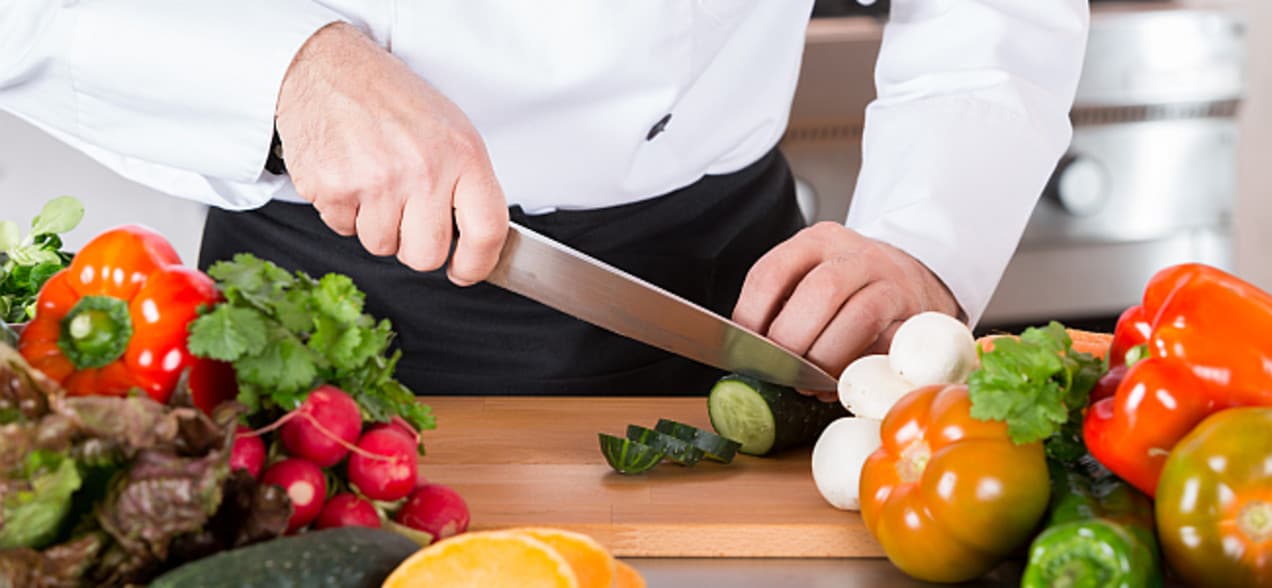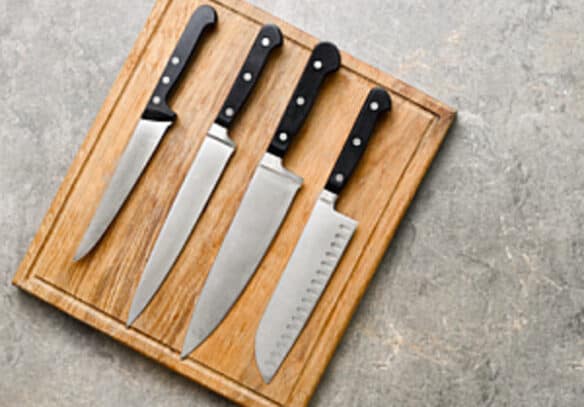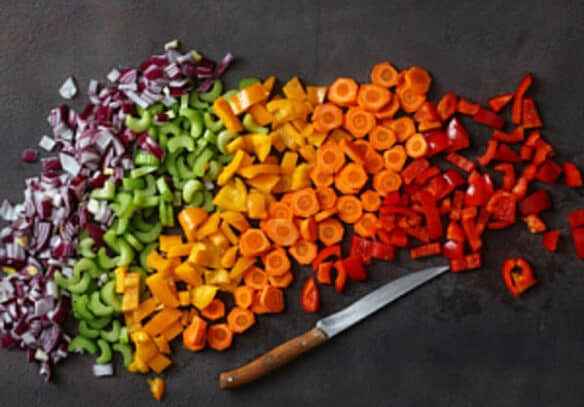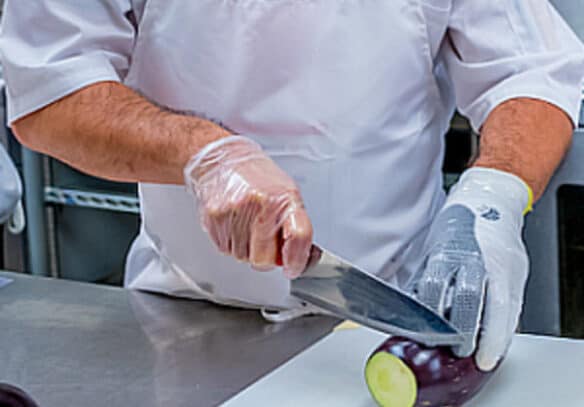
No More Knife Strife
Ever had intentions of cooking a delicious, healthy meal filled with freshly chopped veggies, only to opt for something less daunting? Those days are gone! With a little bit of practice, anyone can master basic knife skills. Once you’re comfortable with a knife, you’ll be able to make many more healthy creations, and maybe even have some fun! Aramark Chef Mike Coble has used his fair share of knives, and he’s here to give the low-down on the chop-up.
Pared, Serrated, or Chef’s Knife?
Most of us reach for a bigger knife for bigger foods, and a smaller knife for smaller foods, but each of those knives in your block has a purpose! Knowing which knife to use for which foods can help make meal prep a breeze. WHO’S THE PAREST OF THEM ALL?
Slice, Dice, or Chop?
The way you cut up a food depends on what you’re cutting and how you want to use the pieces in your cooking creation. The most common ways are slicing, chopping, dicing, and mincing. Find out how to execute each style like a chef, which foods to use them for, and additional pro tips, including a video tutorial. CUT TO THE CHASE
Safe or Not Safe?
Okay, this is an easy one – safe, of course! It may seem counter-intuitive, but the sharper the knife is, the safer it actually is. Why? Because a dull knife requires more pressure—making it more likely to slip and cause an accident. You should also make sure to use a separate cutting board and knife for raw meat, poultry, and seafood to avoid cross-contamination. SAFETY FIRST
Note: Since everyone’s health history and nutritional needs are so different, please make sure that you talk with your doctor and a registered dietitian to get advice about the diet and exercise plan that‘s right for you.



